

Nikon Eclipse E800 – pairing a high-grade research microscope with state-of-the-art camera technology
Cameras featuring large sensors (DSLRs with full-frame or APS-C sensors) generally deliver exceptional image quality. With our LM microscope adapters, state-of-the-art cameras can be paired with Nikon’s Eclipse E800 upright research microscope to attain the highest degrees of resolution, dynamic range and light sensitivity.
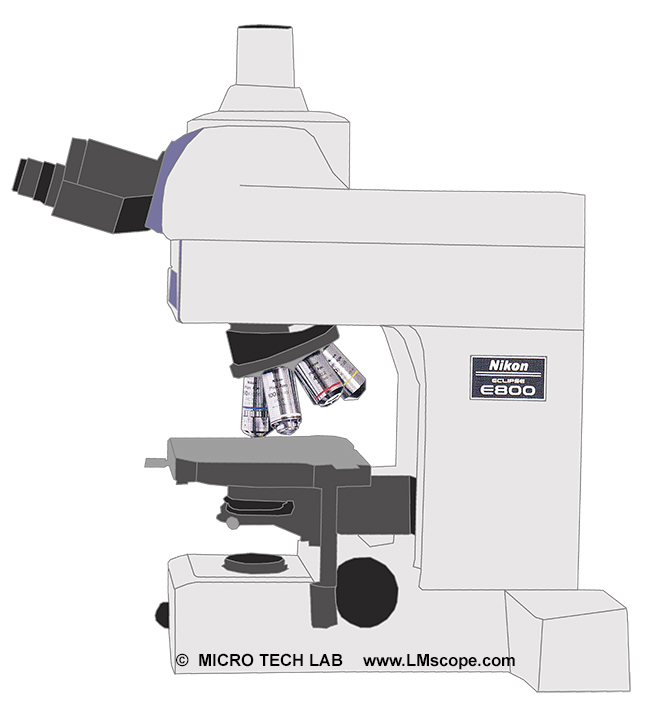
Nikon’s Eclipse E800 upright research microscope was introduced to the market in 1996. It is equipped with a modern infinity-corrected optical system, which makes it a good choice for digital photographic documentation. The Eclipse E800’s CFI60 optical system (CFI stands for chromatic aberration free infinity) is designed to ensure exceedingly long working distances, coupled with high numerical apertures. Introduced with the Eclipse E800 was a Macro Plan UW 0.5x magnification objective, which accommodates an exceptionally large 50 mm field of view when looking through the eyepieces. For higher magnification levels, objective lenses with a maximum magnification of 100x were offered.
This configuration makes it possible to optimally cover a very large magnification range. The following grades of CFI lenses were available:
- Plan Achromate
- Plan Fluride
- Plan Apochromate
The plan apochromat lenses are particularly well suited for modern camera systems and deliver excellent image quality. The following magnification steps were available: 2x, 4x, 10x, 40x, 60x, 100x
Thanks to the microscope’s universal optical system, all essential observation methods were supported:
- Light field
- Epi-Fluorescence
- Nomarski DIC
- Phase contrast
- Polarisation
- Dark field
The Eclipse E800 was designed with ergonomic functionality and stability in mind. The stand is rigid and heavy enough to hold the added load of heavy accessories. A relatively long working distance, a rotatable stage and a tilting eyepiece tube make working with the microscope considerably more comfortable.
The E800 is outfitted with a six-position nosepiece and a 12-volt, 100-watt halogen illuminator and also features anti-mould and anti-dust characteristics as standard. It can be rounded out by a range of accessories, such as a magnification module or dual observation tubes for multiple observers.
Its modular design makes the Eclipse E800 a good choice for photomicrography applications. With a range of trinocular tubes and a beam splitter module, used in conjunction with our LM digital adapters, the microscope can be attached to modern DSLR and system cameras in no time at all and with highly satisfactory results. Our adapter solutions, which feature a plan achromatic precision optical system, are simply attached to the photo tube of the microscope and form the connection between microscope and camera. Assembly is an easy and quick process.
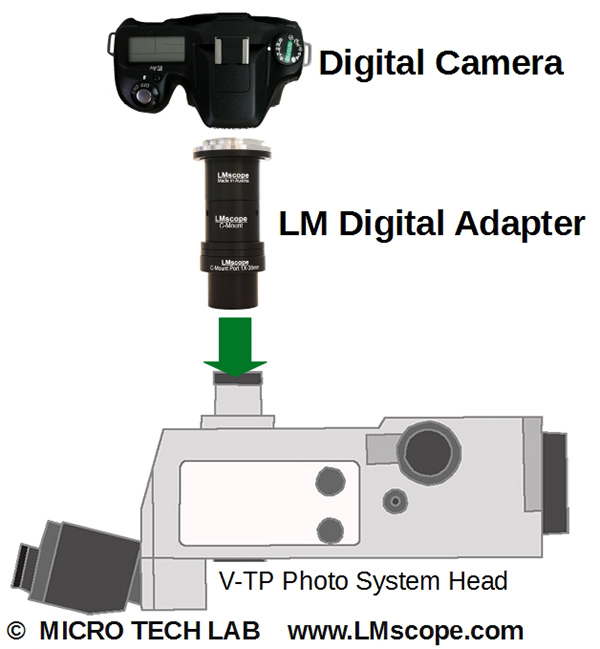
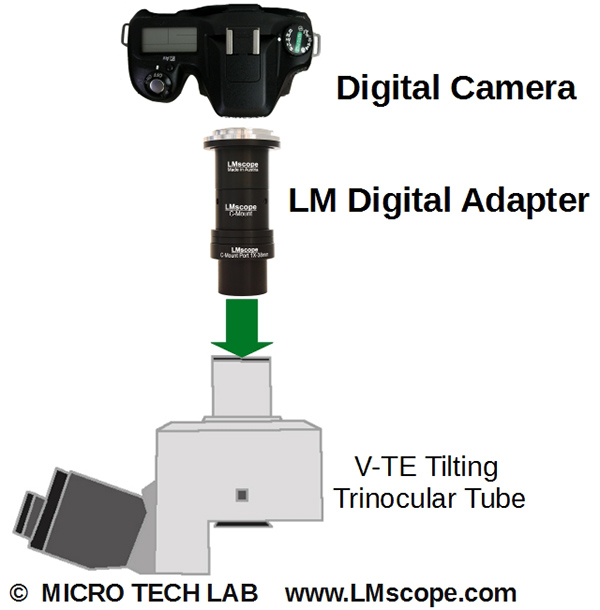
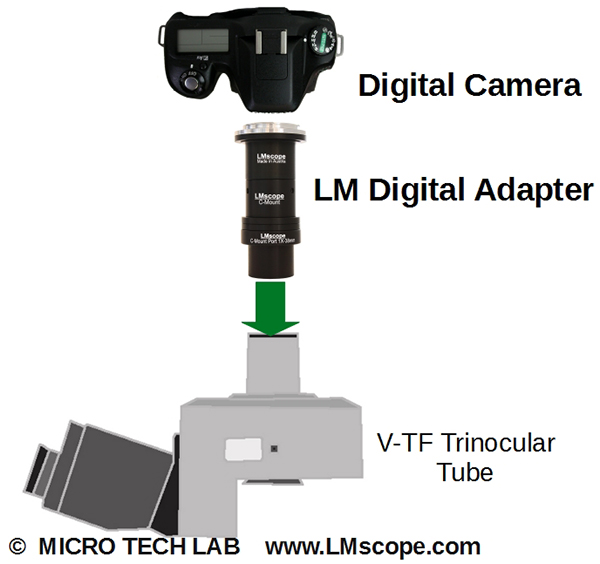
As a rule, the photo tube (Nikon YT-TV adapter) has an internal diameter of 38 mm.
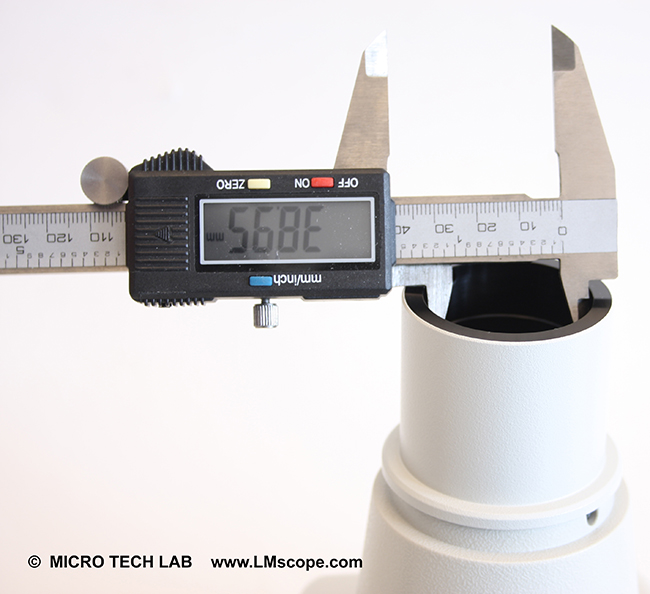
We also offer a special adapter solution for Nikon’s V-T photo adapter with 42 mm internal diameter.
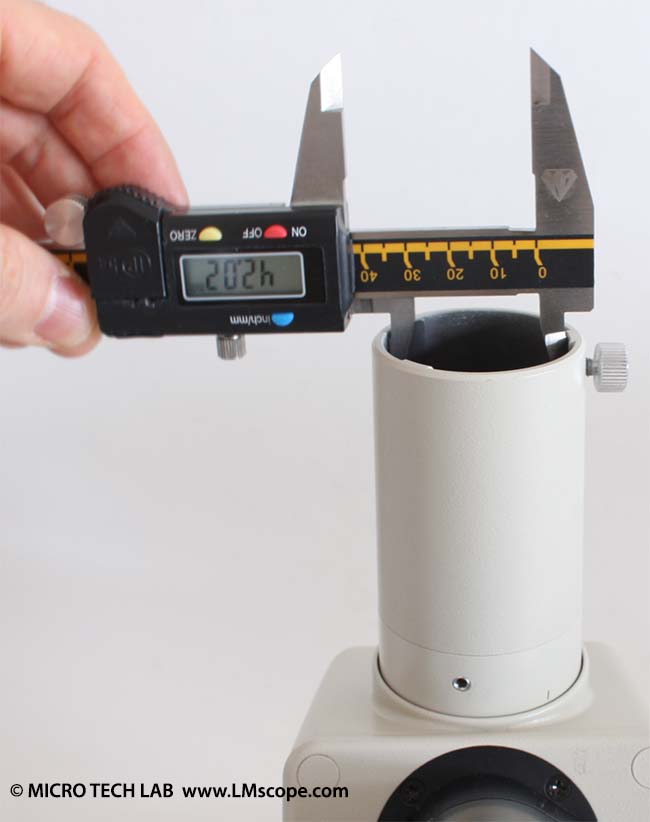
This adapter solution just needs to be inserted into the tube and tightened with the knurled screw. If required, the entire adapter unit can be raised or lowered (after loosening the knurled screw) to optically align the image viewed through the eyepiece with that of the camera image.
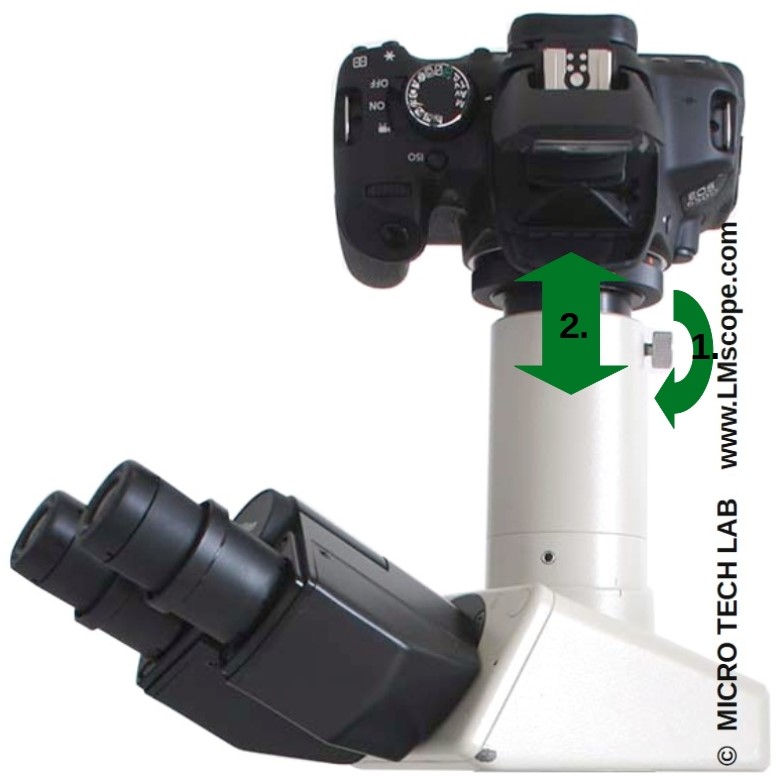
Below, please find a summary of the different adapter options:
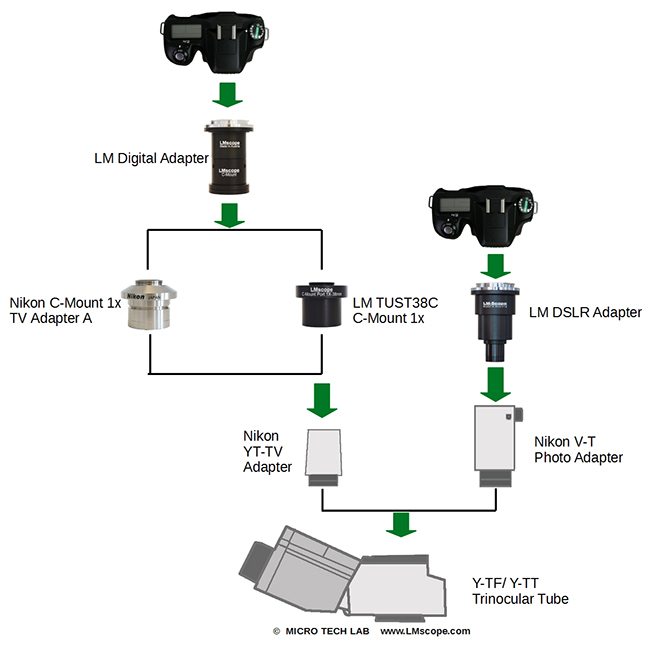
Photography:
Fitting the microscope to digital single-lens reflex (DSLR), mirrorless interchangeable-lens cameras (MILC ), digital single-lens mirrorless (DSLM) or C-mount cameras is easy with our LM digital SLR adapters, which feature a plan achromatic optical system. Our products make it possible to capture top-quality microscope images. To help you select the adapter that is right for your camera, we have set up an online configurator on our website. You can also email us – ideally with attached photographs of your microscope.
Modern DSLR and single-lens mirrorless (DSLM) offer the latest technology and are generally very well suited for microscopy applications. Most of them can be controlled remotely via PC/Mac. Because of their high sales volumes, they offer an excellent price/performance ratio compared to special-purpose microscope cameras.
Features of top DSLR and single-lens mirrorless cameras (DSLM):
- Large, powerful full-frame sensors (36 x 24 mm)
- Sensor resolution of 61 megapixels or 240 megapixels with Pixel Shift technology
- High light sensitivity (ISO 400,000+)
- Extensive dynamic range (up to 15 aperture stops/f-stops)
- Short exposure times (1/8000 second) up to 1/32,000 seconds using the digital shutter
- 4K Ultra HD or 8K Ultra HD video function
- Live video capture on external monitors in ultra HD quality
In most cases, these cameras are significantly more powerful than microscope cameras with smaller sensors (1/2" or 2/3"). On our website you will find our current camera recommendations and a camera ranking which is specifically tailored to microscopy applications.
New LM Digital Adapter for: Nikon Z9 / Nikon Z8 / Sony Alpha 7R V / Sony Alpha 1 / Sony FX3 Cinema Line / Sony Alpha 9 II (ILCE-9M2) / Sony Alpha 9 / Nikon D6 / Canon EOS R3 / Canon EOS R6 Mark II / Canon EOS R8 / Sony Alpha 7R IV / Canon EOS R5 / Sony Alpha 7S II / Sony Alpha 7S III / Sony Alpha 7R III / Canon EOS R6 / Nikon Z6 / Nikon Z6II / Sony Alpha 7R II / Nikon Z7 / Nikon Z7II / Canon EOS R / Canon EOS Ra (Astro) / Nikon Z5 / Sony Alpha 7C / Canon EOS RP / Sony Alpha 7S / Canon EOS R7 / Leica SL2-S / Canon EOS R10 / Canon EOS 1D X Mark III / Nikon Z50 / Nikon Z30 / Nikon Z fc / Nikon D850 / Canon EOS 1D X Mark II / Nikon D780 / Olympus OM-1 / Sony Alpha 7III / Olympus OM-D E-M1 Mark III / Canon EOS R100 / Sony Alpha 6700 / Nikon D5 / Sony Alpha 6600 / Fujifilm X-H2S / Fujifilm X-S10 / Fujifilm X-E4 / Fujifilm X-Pro3 / Olympus OM-D E-M1X / Sony Alpha 6400 / Sony Alpha 6100 / Sony ZV-E10 / Canon EOS 1D X / Nikon D4s / Olympus OM-D E-M5 III / Canon EOS 90D / Canon EOS 5D Mark IV / Nikon D4 / Nikon D750 / Canon EOS 6D Mark II / Fujifilm X-T4 / Fujifilm X-T3 / Sony Alpha 6300 / Sony Alpha 6500 / Nikon D500 / Nikon D810 / Nikon D800 / Canon EOS M6 Mark II / Nikon D800E / Nikon Df / Panasonic Lumix DC-G9 / Nikon D610 / Nikon D600 / Canon EOS 250D / Canon EOS 850D / Rebel T8i / Canon EOS 6D / Sony Alpha 99 II (SLT-A99 II) / Canon EOS M200 / Canon EOS 5DS R ( without low-pass filter) / Olympus OM-D E-M1 Mark II / Canon EOS 80D / Canon EOS M50 Mark II / Canon EOS 5DS / Canon EOS M50 / Sony Alpha 77 II / Canon EOS 70D / Nikon D7200 / Pentax K-1 Mark II / Canon EOS 200D / Canon EOS 800D / Rebel T7i / Canon EOS 77D / Canon EOS 5D Mark III / Canon EOS 60D / Sony Alpha 7R / Sony Alpha 7 / Nikon DS-Qi2 (Microscope Camera) / Olympus OM-D E-M5 II / Nikon D3x / Olympus OM-D E-M1 / Pentax KP /